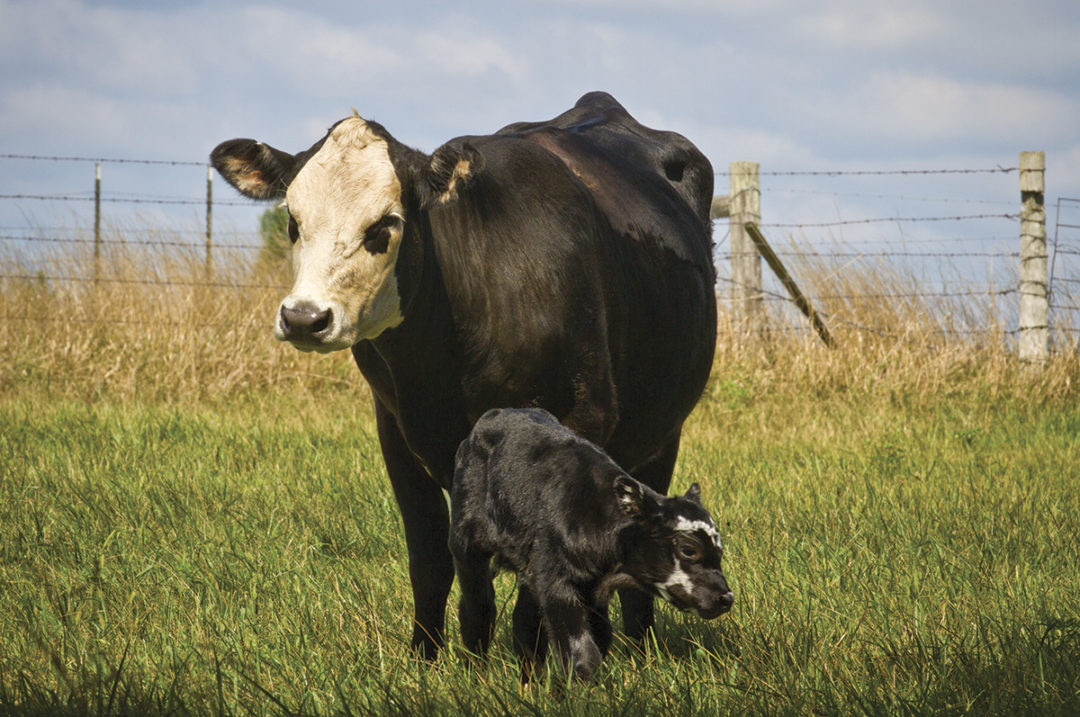Our ability to maximize the efficiency of our cow herd relies on an ideal combination of genetic potential, nutrition, health and luck. I hate to be the bearer of bad news, but the beef industry has few “slam dunk” technologies. Each one comes with its own trade-offs or costs. That said, there is one that has been around for as long as we’ve been breeding cattle, and it is as close to a slam dunk as they come. It is easy to use, doesn’t add additional costs and can significantly boost performance for every economically relevant trait in a commercial cow herd:
Crossbreeding!
Crossbreeding isn’t a new technology. We’ve known about it and have been doing it for ages. Still, according to the USDA’s National Animal Health Monitoring System, crossbreeding remains a severely underutilized tool industry-wide, with less than 50% of commercial operations using it meaningfully. It is hard to think of another action that would increase efficiency industry-wide more than implementing crossbreeding programs in straight-bred commercial herds.
The advantages of crossbreeding are twofold.
First, breed complementarity allows us to match unique breed strengths with one another. This might look like using a terminal breed to add performance and carcass merit to a more maternal set of cows or introducing Bos indicus-influenced breeds to make a herd more tropically adapted.
The second advantage, heterosis, is the overperformance of a crossbreed offspring compared to the average of its two parental lines. Heterosis depends on the breeds’ divergence and varies trait by trait. Lowly heritable traits experience the most significant boosts from heterosis.
As we think about maximizing the effectiveness of heterosis in our herds in the immediate and long term, there are a few things that are worth remembering.
Heterosis is maximized in the first-generation cross
The “anti-inbreeding” effects of heterosis are maximized the first time two breeds are crossed. This first-generation (F1) cross expresses the full amount of possible heterosis between the two breeds. Subsequent matings of F1 animals, or F1 with one of the parent breeds, will still experience a boost from heterosis, though less than in the initial cross.
Extra pounds are great, but the crossbred female is where we see the largest benefits of heterosis
The relationship between the heritability of a trait and the amount of heterosis expressed means that some phenotypes respond more to heterosis than others. Heterosis will add pounds to moderately heritable growth phenotypes (i.e., weaning and yearling weights), but lowly heritable traits see the largest advantages. These traits include phenotypes such as heifer pregnancy, immune function and cow longevity, all of which are central to the profitability of commercial operations. Crossbred cows will produce, on average, an extra calf throughout their productive lives. This makes the crossbred cow a commercial herd’s most valuable asset.
Heterosis doesn’t go away after one generation
Heterosis isn’t a one-shot thing. In a well-designed crossbreeding system, it can be retained from generation to generation. This means that, if we appropriately rotate breeds, we can continue to generate heterosis, adding pounds to calf crops while producing replacement females with their own hybrid vigor.
Crossbreeding programs trade off complexity for retained heterosis
The amount of heterosis generated and retained varies based on the crossbreeding system. For example, a herd that buys F1 females and breeds them all to a third terminal breed maximizes heterosis at the level of the calf and the replacement female. Rotational crossbreeding systems can capture much of this heterosis, though some is lost as replacement females are eventually mated to breeds with which they share some ancestry. Generally, the more complex the system (i.e., more breeds, more breeding pastures), the more heterosis is generated and retained.
Heterosis isn’t just for large herds
This shouldn’t deter small herds, even those that only run one bull at a time, from implementing crossbreeding. The most straightforward approach is purchasing F1 females and using a terminal bull to take full advantage of direct and maternal heterosis. In small herds wishing to retain replacements, multibreed rotations can also be used where breeds are rotated every four years, switching bulls every two years. Compared with rotational systems in larger herds with multiple breeding pastures, this does give up some heterosis, but it is still far better than straight breeding.
Despite its clear results, crossbreeding remains one of the most underutilized tools in the beef industry. It touches all aspects of a commercial herd, particularly on traits that make replacement females more productive and profitable over their lifetimes. Herds large or small can and should take advantage of a crossbreeding program that fits their marketing endpoint, environment and management level. When done in an organized manner, it makes our industry more productive, efficient, profitable and sustainable.









